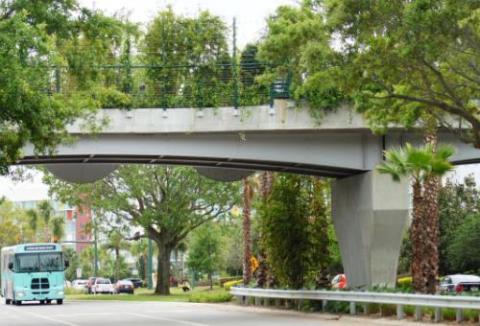Plant Based Solutions

Rarely has a singular event in the recent past changed our way of life as drastically as the COVID-19 pandemic. In the new normal, home has become the epicentre of not just personal but professional life too. Physical activities are restricted to the yard, terrace, balcony, or a room inside the house. The lack of social and environmental interactions and recreational activities, however, is leading to increased stress levels, calling for urgent measures to tackle it.
There is evidence of green infrastructure (GI), a concept that has caught on recently, helping citizens achieve better mental and physical well-being with improved air quality, and better recreational and social space. GI refers to the physical environment within and between our cities, towns, villages, and other settlements. It can be viewed as a network of natural and semi-natural features, including parks, gardens, woodlands, green corridors, waterways.
Incorporation of GI in urban and regional planning is essential to establish an environmental link between urban, peri-urban and rural areas and for building resilient settlements. Additionally, it helps reduce the urban heat island effect, lower the energy requirements in buildings, improve air quality, and curb the risk of floods and other environmental disasters. By improving air quality, GI will also help lower the risk of contracting COVID-19 to some extent.
Thus, green infrastructure will also contribute to several sustainable development goals (SDGs), including SDG 3 relating to good health and well-being, SDG 11, which focusses on sustainable cities and communities, and goal 13 that focuses on climate action.
For better air quality
Even before the pandemic hit, cities such as Milan and Paris adopted a novel urban infrastructure approach – the ’15-minute city’ – with the aim of reducing air pollution. This concept of urban dwelling focuses on reducing vehicle usage by providing access to all the essentials such as shops, healthcare, education, recreation, and parks within a 15-minute walking distance.continuing with flexible working hours will cut down daily traffic on roads in India, leading to reduced air pollution. The introduction of green traffic/public squares, pavements, vehicular roads partially converted to pedestrian paths, could help rein-in air pollution further.
Combining such concepts with GI strategies can work wonders for combating air pollution. Extending remote working policies even after the pandemic, and continuing with flexible working hours will cut down daily traffic on roads in India, leading to reduced air pollution. The introduction of green traffic/public squares, pavements, vehicular roads partially converted to pedestrian paths, could help rein-in air pollution further.
How do we transition?
Certain GI measures, such as green, pedestrian-friendly streets are economical and can be implemented almost immediately without disturbing the current space. In dense neighbourhoods where the existing green spaces are limited in number and size and separated by long distances, small green spaces (pocket gardens) can be planned on non-buildable spaces (irregularly shaped plots, environmentally-sensitive land, buffer areas around water bodies and high-tension lines, etc.). Though there are no specific policies on GI, it could be weaved into policies that involve environment protection, climate change, low carbon development, etc. Funds allocated under these policies can be used by local authorities for the development and maintenance of GI.
The existing infrastructure can be easily turned green by reducing hard-scapes (such as hard paving and concrete flooring) in open spaces, increasing soft-scapes (especially green and permeable surfaces), and introducing green refuges on traffic islands. Further, local authorities can mandate green spaces in big, community parking lots, below flyovers, along the streets, etc. Just a small thought and change in the materials used for embellishing these elements can bring about a huge change with no extra cost but added benefits for our well-being.
For a GI future
In India, where most cities are heavily congested with dense infrastructure, GI should become an integral part of city-planning. Artificial water bodies, green belts, natural vegetation, and discrete cultivation lands should be considered in urban and regional planning. Policy interventions such as mandating a percentage for green areas in public parking (parking policy); open green spaces in building bylaws; incentives for GI in residential, commercial, and institutional campuses; and incentives and guidelines for GI in stand-alone buildings are worth considering.
Though unprecedented in the scale and suffering it caused, this pandemic has given us an opportunity to pause and take a hard look at where we are headed as a civilisation. It is time to bring green back in urban planning policies, with proper government backing and adequate fund allocation.




